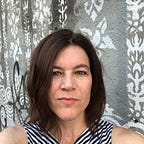Inaugural Future Imagination Summit Kicks off With Co-Creation
By Katerina Cizek
Conventional futurists sell the inevitability of new tech solutions and how they will improve our lives. Yet these futurists reproduce current systems that benefit only a privileged few. Rather than “predicting” the future, corporate-aligned forecasters write the future in the very act of telling it. It is not magic. It’s a design to trick the eye.
“We look at the present through a rear-view mirror. We march backward into the future,” noted Marshall McLuhan in The Medium is the Message.
But there are also radical futurists, grounded with deep critiques of the current world, calling into action a collective future for all, based on compassion, justice, and harmony. By imagining radical futures, people’s movements can conjure these visions into actions in the present day. The newly minted Guild of Future Architects, led by Executive Director Kamal Sinclair, seeks to network these radical futurists across many fields and practices. The Guild convened for the first time in New York City in November 2019.
The key to much of this future imagination work is co-creation: collective practices that function outside the limits of single authorship, and the hierarchies of current domains of expertise and media industries, as described in the Collective Wisdom field study, which I co-authored.
At the Guild’s recent Future Imagination Summit, we kicked off the gathering by hosting a conversation between four artists who co-create blueprints and projects for just visions. The discussions were grounded in Indigenous epistemologies and antecedent technologies, critical design justice practices, Black-centered collective media and community creation, and art performances that showcase the entangled relationships between humans and artificial intelligence. All of the projects highlighted the role of co-creation in re-imagining a future built on justice.
Here are a few photo highlights from the event. For more, see the full story on the Co-Creation Studio site.
This article was originally published on Immerse. It is a result of a collaboration between the Guild of Future Architects, Sundance Institute, NYU Future Imagination Fund and MIT Open Doc Lab’s Co-Creation Studio. Immerse’s Collective Wisdom series features excerpts from MIT Open Documentary Lab’s larger field study — Collective Wisdom: Co-Creating Media within Communities, across Disciplines and with Algorithms — as well as bonus interviews and exclusive content.
